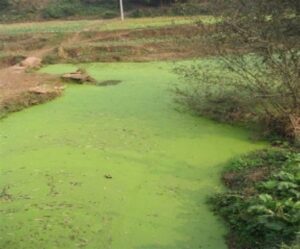Phosphates have low toxicity in the environment, but causes nutrient pollution, a major water quality problem in many watersheds. Phosphates in water cause eutrophication of algae and creates conditions favorable to formation of harmful algal blooms and alters the composition of aquatic species. Lack of sunlight chokes out native plants and Oxygen levels take a dive as a result of too much phosphorus. In bodies of water with an incredibly dense population of plants, or eutrophic water, animals and even other plants suffer from the low supply of oxygen.

Chloride occurs naturally in lakes and streams, and many organisms need it to carry out the basic functions of life. But elevated levels can cause cells to lose water and become deprived of nutrients, ultimately killing fish, amphibians, plants, and other aquatic organisms. One teaspoon of salt pollutes five gallons of water. On land, excessive amounts of chloride can harm pets, soil, cars, bridges, and eventually finds its way to our lakes and rivers.
The US EPA considers nutrient pollution to be one of the most important environmental challenges we face in the twenty-first century (USEPA 2009).
And while there is no good way to remove these excess nutrients from our lakes, there are some simple things people can do to reduce the environmental load.
Funding for this project was provided in part by the Lake County Stormwater Management Commission through a Watershed Management Board Grant
